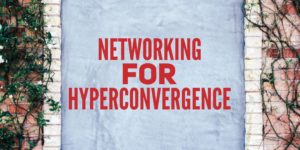
Optimizing NVMe over Fabrics Performance with Different Ethernet Transports: Host Factors
NVMe over Fabrics technology is gaining momentum and getting more traction in data centers, but there are three kinds of Ethernet based NVMe over Fabrics transports: iWARP, RoCEv2 and TCP.
How do we optimize NVMe over Fabrics performance with different
Ethernet transports? That will be the discussion topic at our SNIA Networking Storage Forum Webcast, “Optimizing NVMe over Fabrics Performance with Different Ethernet Transports: Host Factors” on September 16, 2020.
Setting aside the considerations of network infrastructure,
scalability, security requirements and complete solution stack, this webcast
will explore the performance of different Ethernet-based transports for NVMe over Fabrics at the detailed benchmark level. We will show three key
performance indicators: IOPs, Throughput, and Latency with different workloads including: Read More
 Hyperconverged infrastructures (also known as “HCI”) are designed to be easy to set up and manage. All you need to do is add networking. In practice, the “add networking” part has been more difficult than most anticipated. That’s why the SNIA Networking Storage Forum (NSF) hosted a live webcast “
Hyperconverged infrastructures (also known as “HCI”) are designed to be easy to set up and manage. All you need to do is add networking. In practice, the “add networking” part has been more difficult than most anticipated. That’s why the SNIA Networking Storage Forum (NSF) hosted a live webcast “